What does the AMD Ryzen 6000 Series mean for gaming laptops?
Gaming laptops could become far more power-efficient and affordable with the AMD Ryzen 6000 series
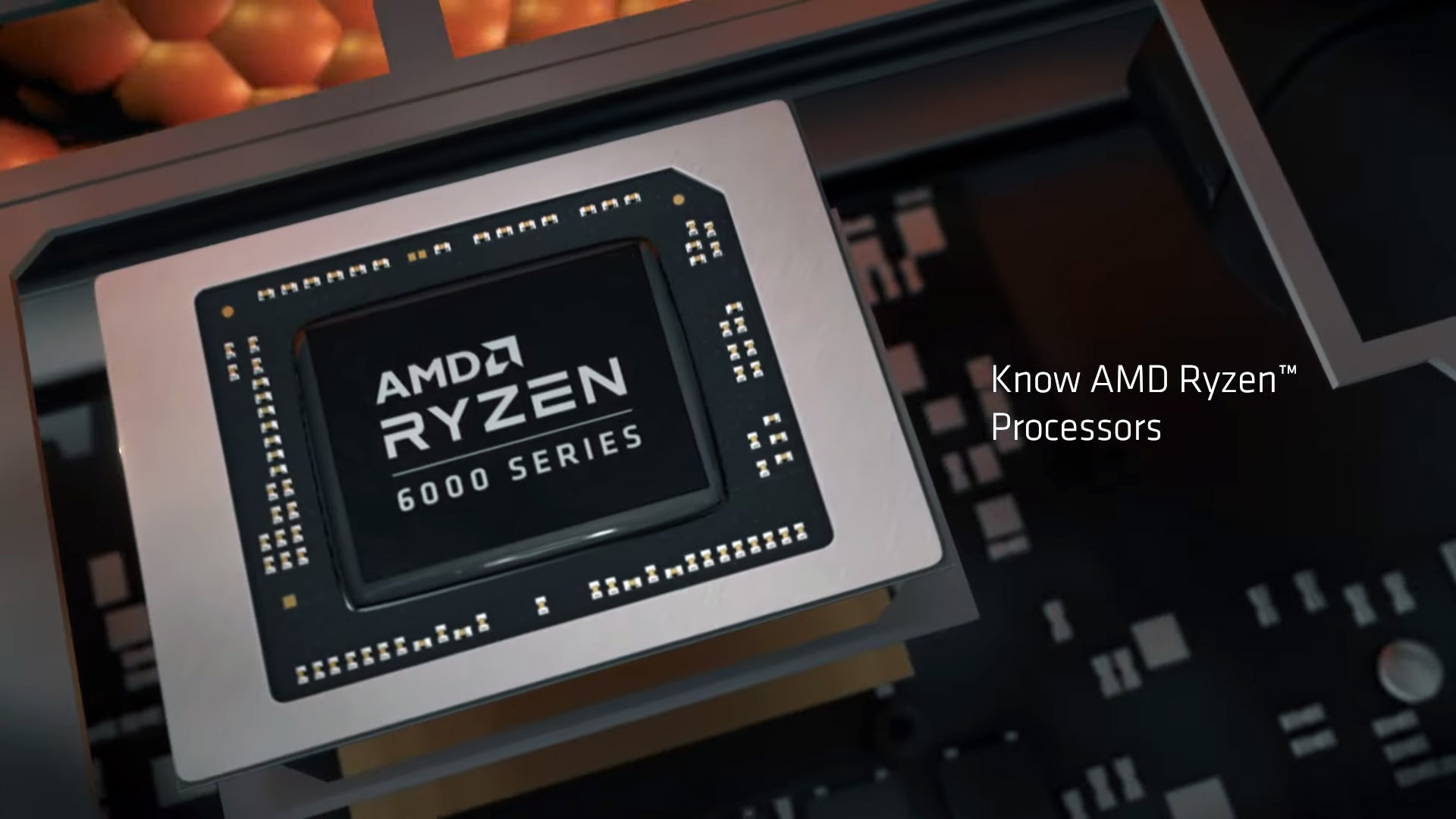
The AMD Ryzen 6000 Series of mobile processors has been unveiled. These new APUs are launching next month inside everything from budget-built machines to the best gaming laptops. The company claims that its aim is to bring power efficiency and longer battery lives to all systems that utilize its hardware through proprietary software and a new technological manufacturing process.
How will Ryzen 6000 Series be more power efficient?
The Ryzen 6000 Series is built on the Zen 3+ architecture, with the chipset manufacturer claiming that the "plus is all about efficiency". From an architectural standpoint, it all comes down to power optimization, in what has been broken down into five key layers of power-saving opportunities. These are the 6nm process technology, a new microarchitecture, system on chip advancements, power management firmware, and platform support.
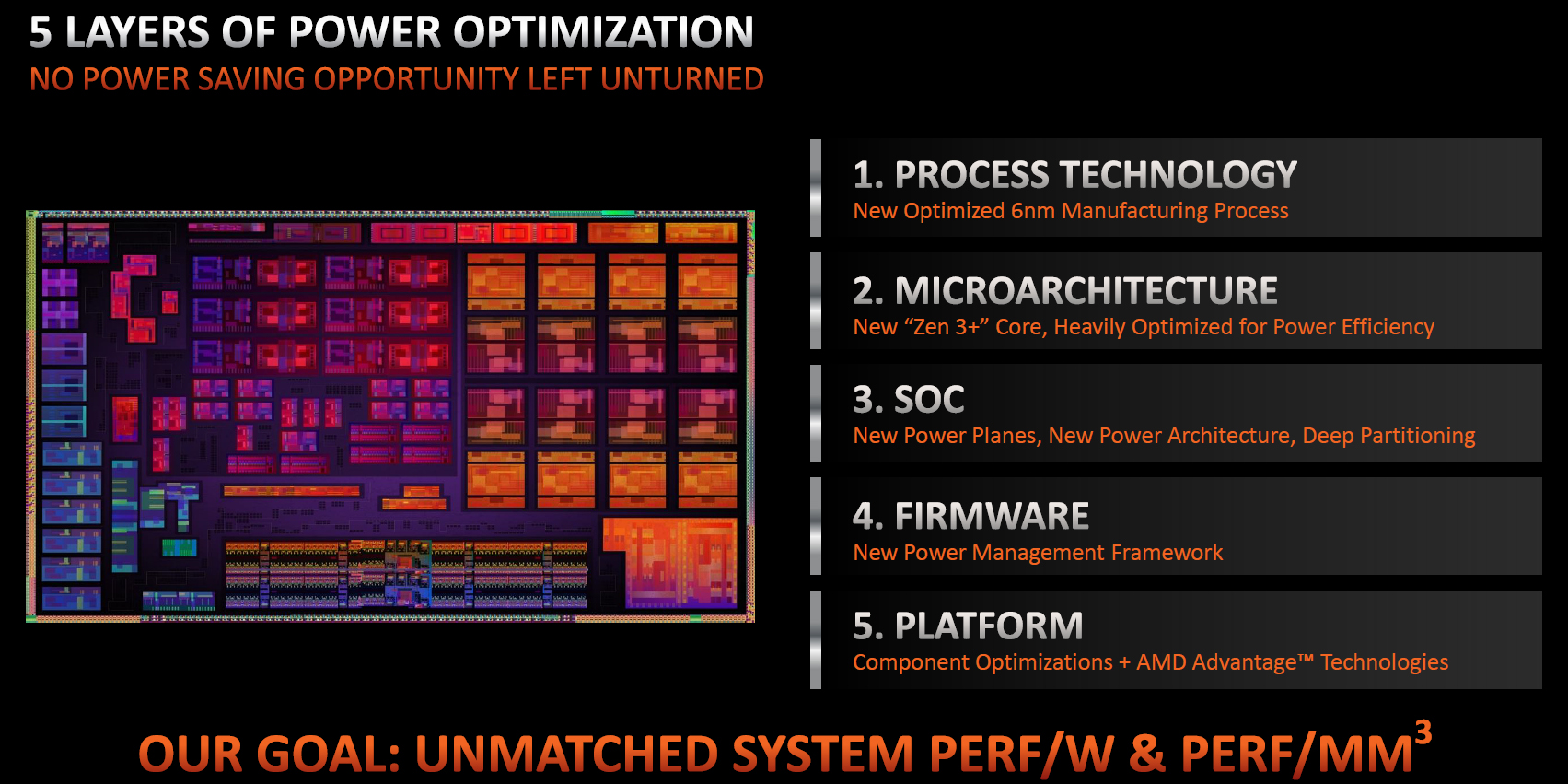
On a more basic level, the Zen 3+ architecture is focused on performance per watt through thread performance instead of being core reliant, meaning that more can be done to preserve power on a more minute basis. This level of deeper control means that the power level and clock can be tailored more specifically than what's previously been possible.
Software also plays a part in power proficiency. A new algorithm has been designed and implemented to track thermals, power, and acoustic depending on the intensity of processing tasks. What this means is that A.I. can automatically optimize which processing tasks require what amount of power.
Will you be able to game without a graphics card?
The biggest strength of the Ryzen 6000 Series of mobile processors on the lower level can be found when analyzing the jump from Vega integrated graphics to RDNA 2 architecture. AMD claims that most PC games will be playable in 1080p "smoothly" when utilizing the new Radeon 600M series of graphics processors.
AMD Ryzen 5 6000 systems will feature Radeon 660M graphics, whereas AMD Ryzen 7 and 9 machines will utilize a Radeon 680M integrated GPU. The core difference between the two is fairly straightforward. The Radeon 660M features 6-cores clocked at up to 1.9GHz and the 680M doubles that count to 12-cores at a faster clock speed of up to 2.4GHz.
This means that PC gamers won't need a system with a discrete graphics card in order to play the latest PC games. However, that's not come without a few sacrifices, though, it appears to be a big leap forward as far as cheap gaming laptops are concerned.
Sign up to the GamesRadar+ Newsletter
Weekly digests, tales from the communities you love, and more
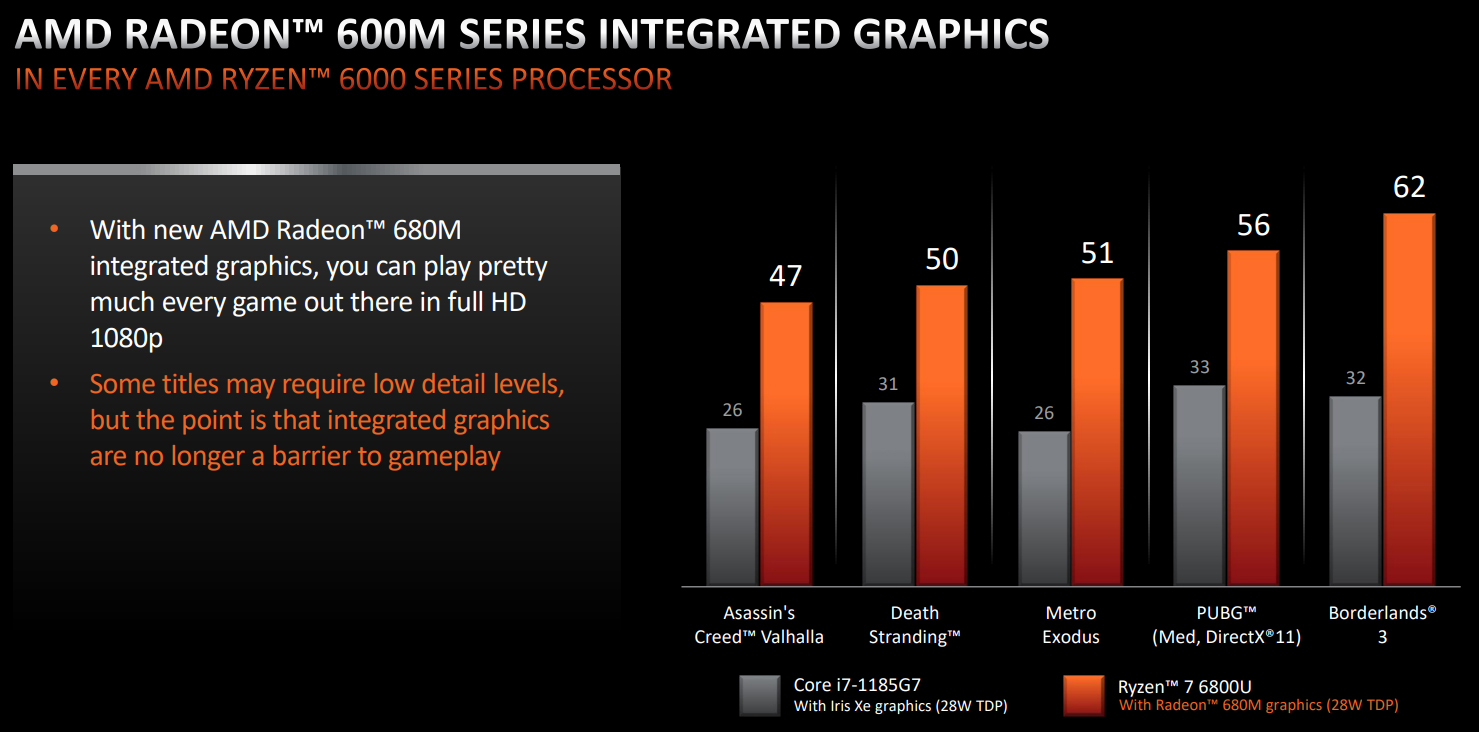
As you can see from the benchmarks above, the AMD Radeon 600M series of Integrated graphics, which is baked into every AMD Ryzen 6000 mobile processor, is capable of running demanding games at playable framerates.
You'll notice that the only title to achieve above 60 FPS is Borderlands 3, a very well optimized game, but we're also seeing just shy of that figure in the likes of Assassin's Creed Valhalla, Metro Exodus, and Death Stranding, too. All of these games are running on the AMD Ryzen 7 6800U processor with Radeon 680M integrated graphics, which is one of the lower-end chipsets in the line-up.
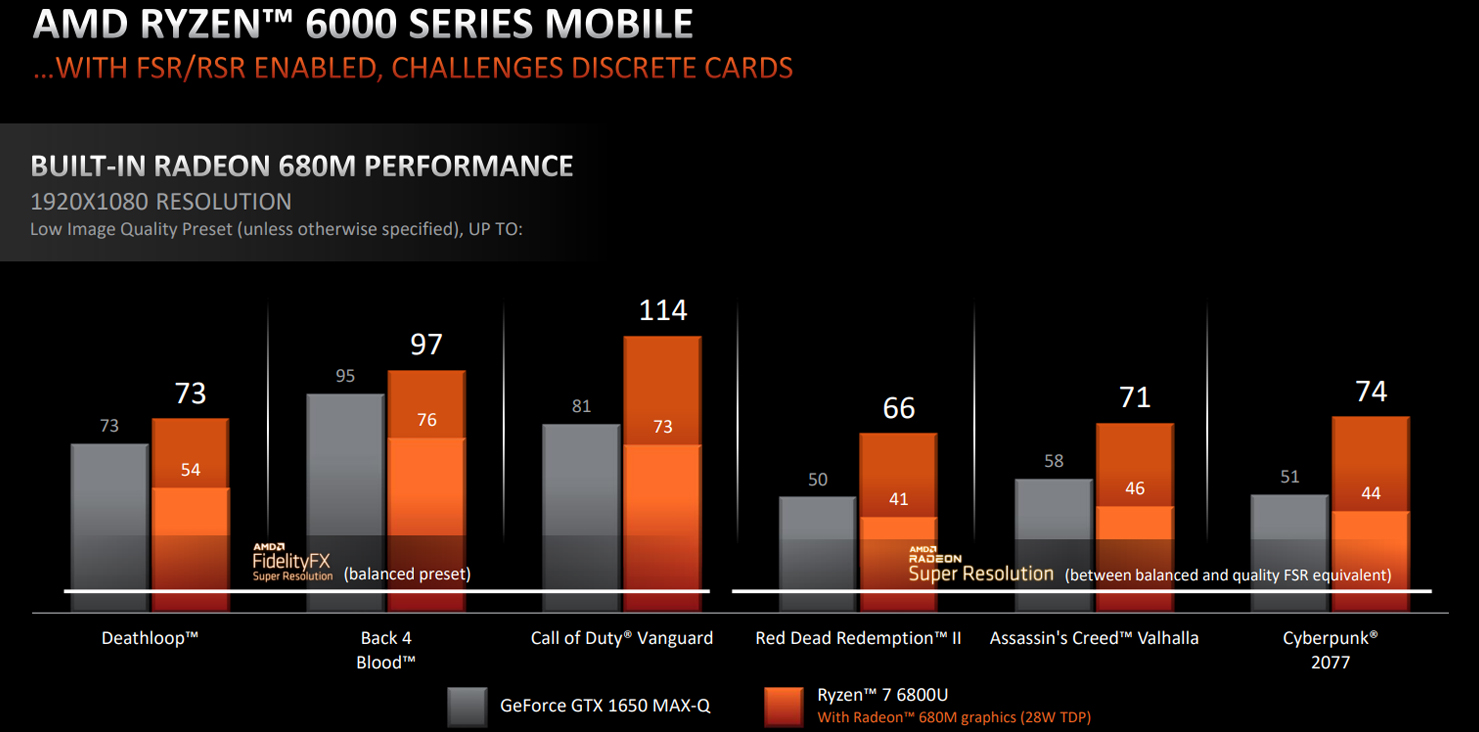
The benchmarks become far more promising when utilizing FidelityFX Super Resolution, however, as the 680M of integrated graphics is able to outperform that of the discrete GTX 1650 GPU, which is common inside many budget laptops. Framerates are either matched or exceeded, but it goes to show that any notebook, or ultrabook, that isn't necessarily geared towards gaming will be capable of running PC games competently.
AMD Ryzen 6000 Series-enabled gaming laptops are going to be able to achieve up to 5.0 GHz clock speeds while making use of PCI Express 4.0 bandwidth. This means that pairing the likes of the Ryzen 9 6900HS and Radeon 6800S together will result in between a 7 and 16% power increase over previous generation hardware.
Which Ryzen 6000 Series processors are releasing?
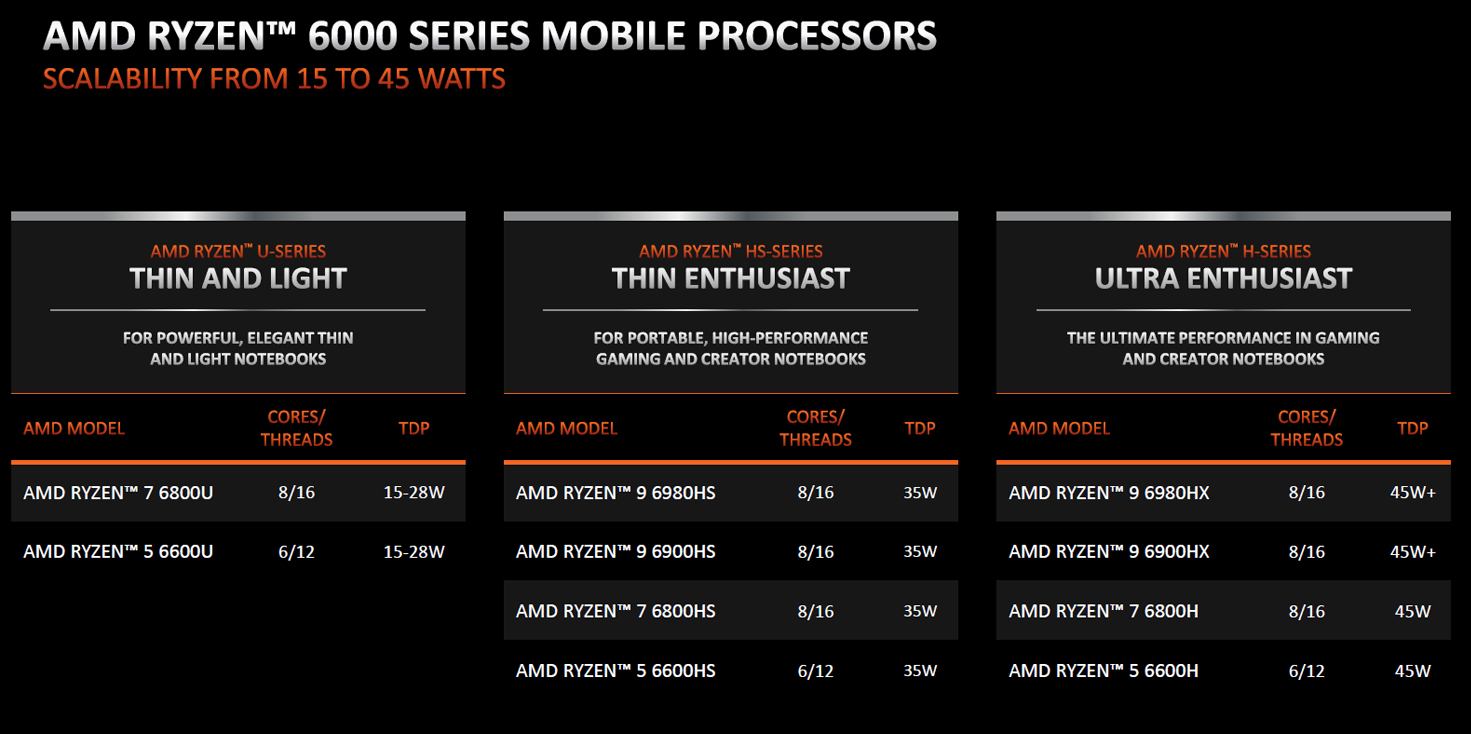
There are three main generations of Ryzen 6000 processors that are due to be released next month, the U Series (built primarily for ultrabooks) as well as the HS and HX Series (made for gaming/creator laptops).
The U-Series is being marketed for thin and light machines of lower power output (between 15-28 watts). The two confirmed U Series CPUs are as follows:
AMD Ryzen 5 6600U (6-cores / 12 threads)
AMD Ryzen 7 6800U (8-cores / 16 threads)
The HS-Series is made for thinner gaming/creator laptops and takes advantage of 35W for a noticeable bump up in power potential. This line has been aimed at enthusiast users and features the following processors:
AMD Ryzen 5 6600HS (6-cores / 12 threads)
AMD Ryzen 7 6800HS (8-cores / 16 threads)
AMD Ryzen 9 6900HS (8-cores / 16 threads)
AMD Ryzen 9 6980HS (8-cores / 16 threads)
Lastly, the AMD Ryzen 6000 H-Series is for the highest-end of mobile gaming / creator-led laptops featuring 45W TDP:
AMD Ryzen 5 6600H (6-cores / 12 threads)
AMD Ryzen 7 6800H (8-cores / 16 threads)
AMD Ryzen 9 6900HX (8-cores / 16 threads)
AMD Ryzen 9 6980HX (8-cores / 16 threads)
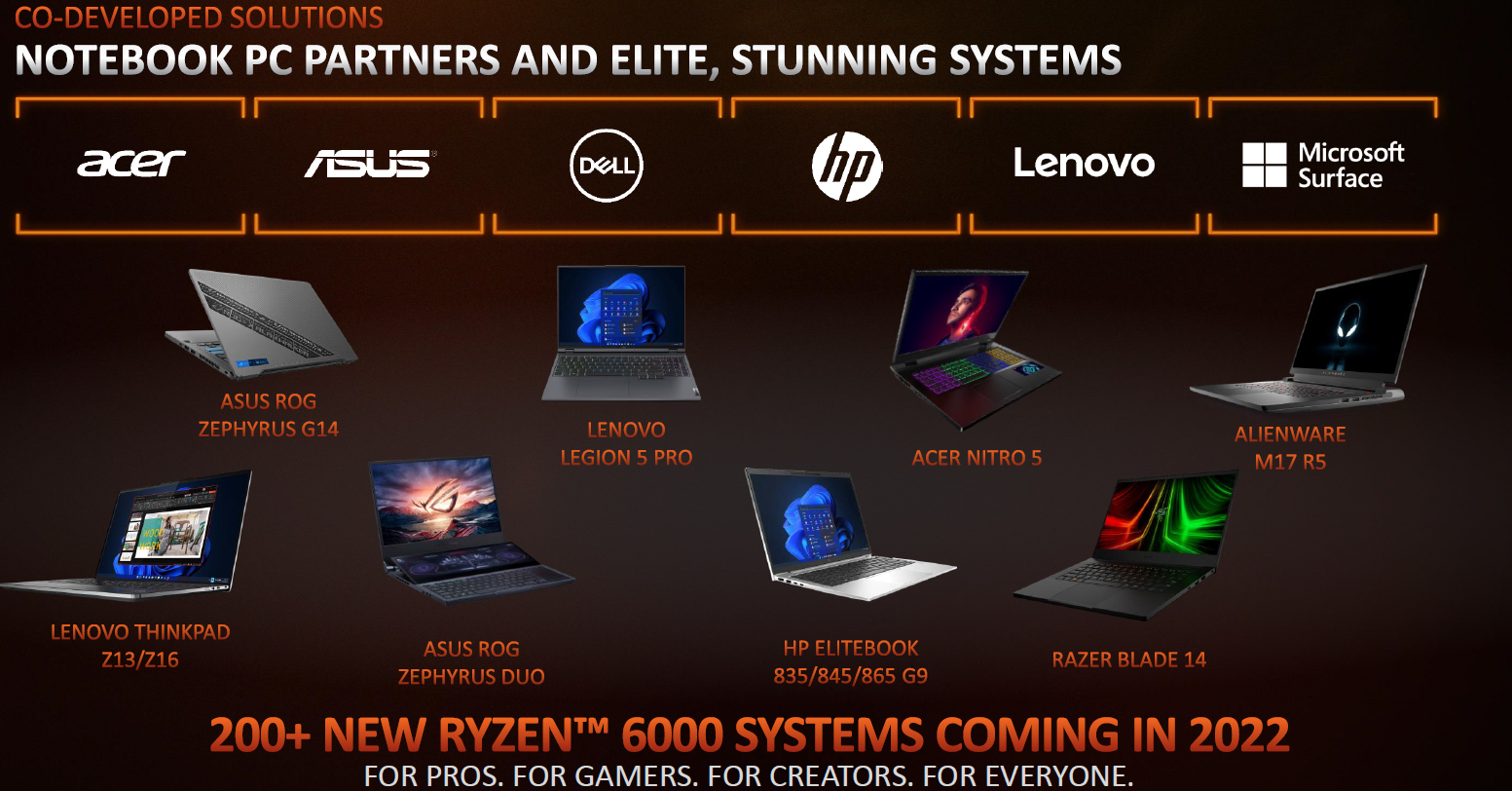
Which gaming laptops will feature Ryzen 6000 Series?
With the Ryzen 6000 Series due to launch next month, there have already been many partners confirmed to be releasing machines running the latest mobile hardware. There is an estimated 200+ Ryzen 6000 systems launching throughout 2022, including that of the Asus ROG Zephyrus G14, Alienware M17 R5, Razer Blade 14, Lenovo Legion 5 Pro, and the Acer Nitro 5.
It's looking as though longer battery lives and far more efficient performance is on the cards for both budget builds and flagships alike. This could mean far longer operation than what is typically found in many gaming laptops at the moment, while also keeping those core temperatures down.
Make the most of Ryzen 6000 processor laptops with the best gaming monitors, best gaming keyboards, and best gaming mouse.

Aleksha McLoughlin served as the Hardware Editor for GamesRadar from June 2021 until August 2022. Her main area of expertise was the PC gaming platform, which comprised buying guides, features, reviews, and news coverage on components and prebuilt machines. She was also responsible for gaming chairs and storage. She now works on a freelance basis while studying to become a university lecturer specializing in English for foreign territories. Prior to joining GamesRadar, she wrote for the likes of Expert Reviews, The Rory Peck Trust, No Clean Singing, Vinyl Chapters, and Tech Spark while also working with the BBC.


